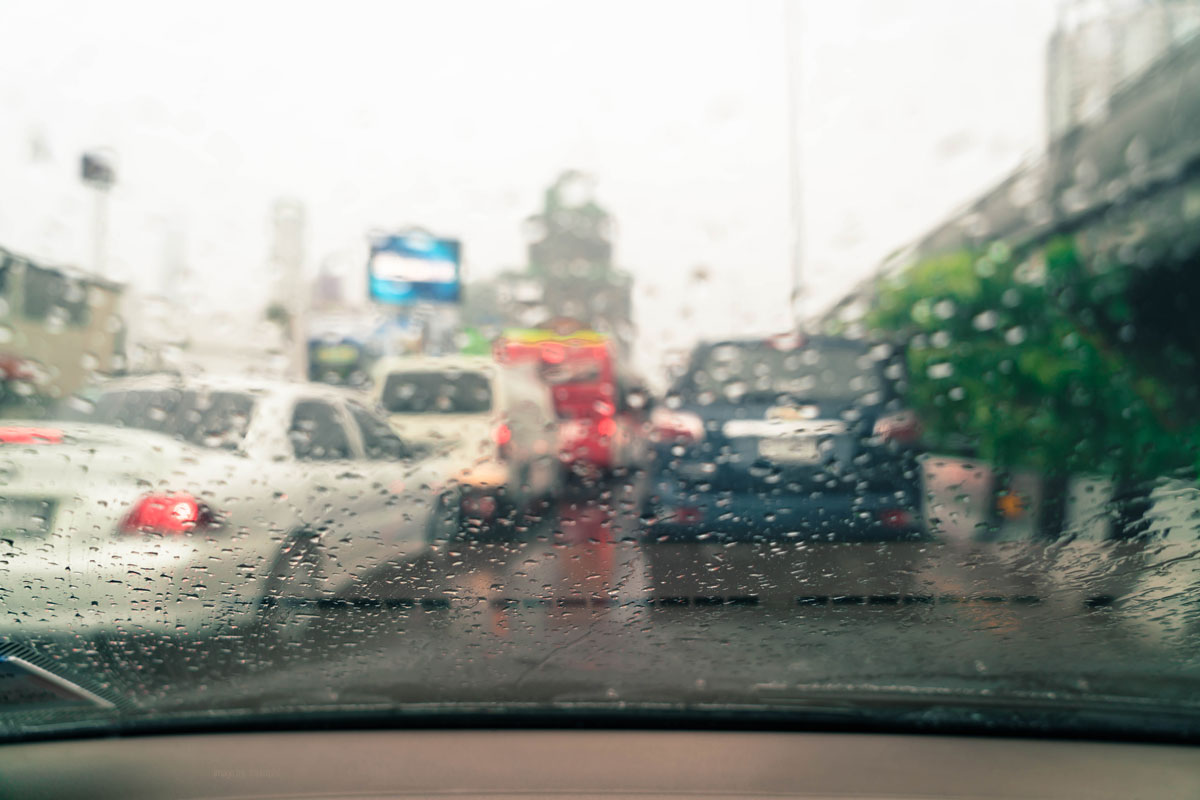
Rainy weather can quickly transform a leisurely drive into a potentially hazardous situation. As a responsible driver, being prepared and informed about how to navigate heavy rain is crucial for your safety and that of others on the road. In this blog post, we’ll provide you with practical tips and insights on dealing with heavy rain, ensuring that you can stay safe and make informed decisions during stormy weather.
Slow Down and Increase Following Distance
When rain pours down, roads become slick and slippery. Reduce your speed and maintain a safe following distance from the vehicle ahead to give yourself ample time to react to sudden stops or emergencies. Avoid sudden movements, such as sharp turns or abrupt braking, which can lead to loss of control.
Turn On Your Lights
Visibility is significantly reduced during heavy rain, both for you and for other drivers. Turn on your headlights to increase your own visibility and make your vehicle more noticeable to others. If your vehicle has fog lights, consider using them as well, but avoid using high beams as they can reflect off the rain and further impair visibility.
Use Windshield Wipers and Defroster
Ensure your windshield wipers are in good condition and functioning properly. Turn them on to maintain a clear view of the road ahead. If your windows begin to fog up, use the defroster to clear them. Proper visibility is essential for safe driving in heavy rain.
Avoid Hydroplaning
Hydroplaning occurs when your vehicle’s tires lose contact with the road due to a layer of water between the tires and the pavement. To avoid hydroplaning, drive at a moderate speed, avoid sharp turns, and refrain from using cruise control in wet conditions. If you do start to hydroplane, gently ease off the accelerator and steer in the direction you want to go.
Beware of Puddles and Standing Water
Even shallow puddles can hide deeper potholes or hazards beneath the water’s surface. Avoid driving through large puddles or standing water, as this can damage your vehicle or cause you to lose control. If you can’t see the road beneath the water, it’s best to find an alternative route.
Stay Informed and Plan Ahead
Before heading out in heavy rain, check weather forecasts and road conditions. If possible, delay your trip or choose an alternate route if severe weather is expected. Staying informed can help you avoid unnecessary risks and make better decisions while on the road.
Emergency Preparedness
In case of an emergency, such as a breakdown or accident, it’s important to be prepared. Keep a fully charged mobile phone with you, along with essential items like a flashlight, first aid kit, and reflective triangles. If you find yourself stranded, contact SpeedyG Towing at 847-844-1400 we offer 24/7 assistance.
As a responsible driver, your safety and the safety of others on the road are paramount, especially when facing challenging weather conditions like heavy rain. By following these practical tips and exercising caution, you can navigate stormy weather with confidence and minimize the risks associated with wet roadways. Remember, your actions on the road play a significant role in ensuring a safe and secure journey for yourself and those around you.



